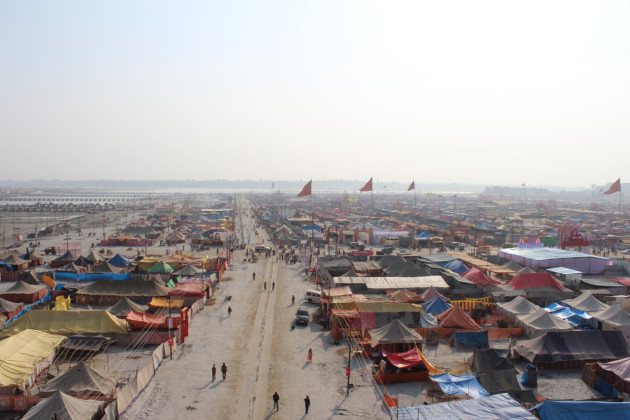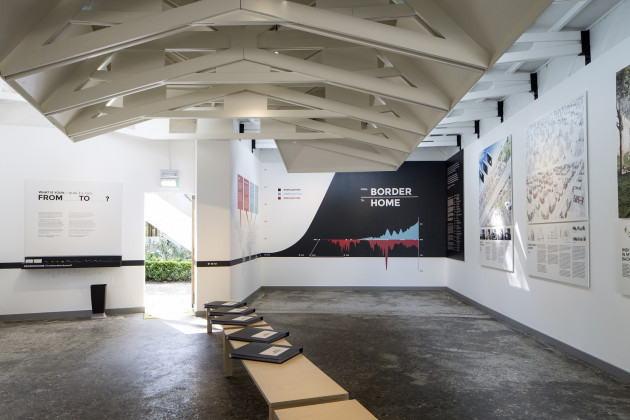Where is my Home?
“For it often happens that when I carelessly speak of ‘my life’ I am forced to ask, ‘which life’—the one before the World War, the one between the first and second, or the life of today? Or I find myself saying ‘my house,’ and at first I do not know which of my former homes I mean, the one in Bath, or the one in Salzburg, or my parental home in Vienna.”
Stefan Zweig- The World of Yesterday: An Autobiography
The source of Zweig’s questioning of home and belonging pushed many artists and thinkers of the age to produce texts that would reconstruct paradigms. The book, which includes the quote above, was published in 1942; and after 70 years, these words are transformed into devastating truths; and the ability to dream and construct, like Zweig had done, stopped being a necessity. We know certain concepts and objects like home, homeland and shelter from the time of our birth. While we know what they are, what they refer to and what they point at; we are losing their traces today, borders are getting blurry, meanings are vanishing, and representation is diminishing. Superior mechanisms do not only carry the imprints of these concepts and objects, but also become reflections of them. Each person who is practicing the profession of architecture redefines the discipline accordingly; and finding a purpose to struggle for, or to come to an environment of struggle, is directly linked to this representation.
Concepts that construct, distinguish, and isolate “the nation-state”—a long list including deterritorialization and climate—are tumbling down as facilitators of identity-representation continue to compose themselves in different forms and environments. Instead of using its creative force and physical-cultural accumulation, or its authority and ability to cooperate with different disciplines in the problem-solving processes of city and space, architecture still works under the command of capitalism and the state apparatus. It continues to finish its projects, themselves made in eclectic methods with deteriorating conceptuality, with neoclassical final touches. While somewhere in the world, people who can only afford to rent places made up of only floors and columns are trying to brick up walls and turn these places into homes, the international architectural gatherings still resemble that first expo in Crystal Palace.
What makes the 15th Venice Architecture Biennale, curated by Alejandro Aravena, different and what distances it from a chauvinistic Expo, like the one back in the 19th century that gave way to the building of the Eiffel Tower, is giving the biennale an opportunity to take on the role of a storyteller. It is not a collection of personal stories, or the story about the best or the most beautiful among us. Yet it is also not the story of the “other”, the poor, or the victim. If it had been so, it would have probably received a stronger applause and result in a more devastating critique.
This is a narrative. A narrative introduced by a strong and splendid introductory visual before its appearance as an exhibition: a photo that Bruce Chatwin took in South America of a woman climbing a ladder. The photo gives out the feeling of possibility and the feeling of faith, rather than the attempt itself, in garnering different perspectives by using relatively right devices to reflect on any inspiration in the middle of nowhere. Those who seek for Chatwin’s ladder in architecture are the ones who sustain the narrative throughout the biennale.
Is it possible to think architecture in newer ways within the practice even though as a profession it is a direct reflection of economic networks and absolute power? Do we have any chance to focus on what we should do without getting lost in semantics? Can we criticize things without attaching them to whomever that produced them? Can we go beyond ourselves, beyond personal relationships, beyond producing naïve projects with naïve mediums? Can we create distortions that can only be produced within the system, but without using the system’s own language, and with brand new words? Can we construct a brand new language all together?
Humanitarian thinking comes into work right here. The path forward is the search for methods to expose things, subjects and whole other components, as themselves, as well as the way they present themselves to be, without turning them into symbols, icons or heroes based on the reflection in our minds. In this sense, there are three leading subjects in the network of inspiration: city as a place where people have togetherness, shelter and structure. Indeed, there is no need for anything else to call a place “home”.
In some places, these three principles are blending into one another, and in others, they build each other up. The language constructed while using what’s ready and imminent, and producing dynamics from the already existent, is not independent from the system, or from the economic relations. Structures define different types of temporality. Their reason for existence is not the easiness of their application, but their potential to produce answers by using existent tools—which is why they are precious: you do not have to throw them away when you are done. On the contrary, these structures can transform into the foundation of a different, and stronger, system.
Contrary to expectations, the refugee crisis is not dealt with only along the axis of shelter. Steps towards a new kind life that comes not from birth but from war, are not taken only as humanitarian aid, but also as the construction of an urban identity. Housing crisis, job opportunities, city problems already present, also take part in the solution process. Looking at refugees doesn’t mean dealing only with camps, but also with the city and the interaction, relation and connection of spaces and people.
Deserted office buildings, abandoned residents, or public buildings subjected to renovation… All of them are opening up to rethinking, to adaptive reuse, or to transformation—as in the projects of the Finnish pavilion. Ground floors of unused office buildings can turn into public spaces as upper floors transform into houses. Abandoned houses can become temporary living spaces. School buildings under renovation can become temporary homes to people before functioning as places of education. A system can be developed through which tenants open their homes to refugees, and in return pay 25% less for their own rent. Maybe through these methods or with a new mobile application (Finland Pavilion, SocietyLab project), refugees can find a place to live under humane conditions, rather than having to put out this ad on an Airbnb page:
“This is a real opportunity to experience life as a Syrian refugee. While EU politicians only talk about the refugees, you can have the authentic refugee experience – tents, cooking over open fire, 41 degree [105.8º F] heat, marginal sanitary conditions, friendly scorpions, broken promises, and even dehydration.”
If there aren’t any unused spaces in the city, there is also another solution: what are the empty backyards for? “In My Backyard” project promises hope for a neighborhood that is consisted of buildings constructed with collaboration, produced by users, owners of backyard spaces and entrepreneurs. City is the basic element that holds everything together. We can’t define examples of temporal spaces as rural/urban/individual/together, since each proposes a new form by questioning the existing urbanization: A system will be real only if we get together; in other words, only collaboration will make it real. Whatever tool is used, a debate begins: Who owns the city?
The city, developing under the rule of economy and politics, (re)remembers itself as the network of living together. This network focuses inevitably on basic technique, imminent materials and togetherness. With a ladder than can be found right away, it tries to build not only a new city but a new form of living.
Some of them, like Gabinete de Arquitectura, with its arch structure made of brick and timber, point out the meaninglessness of attempting to stop incoming populations to the city, and to signal towards sufficient workmanship to reveal material’s quality, while criticizing the construction sector’s passion for quick production, little craftsmanship, and unqualified end product. Some of them, like Manuel Herz’ work in West Sahara, seek to find the meaning of things left behind by using local construction techniques. Herz uses mud and tent, two already-traditional elements that are involved in the local architecture for the temporal usage of refugees. The tent, which is the first thing that comes to Western minds whenever someone mentions humanitarian aid, refers here to a familiar temporality as a material known to tradition and to architectural typology. Mud, essential and valuable, provides durable material. Contradiction intertwines with space: When the temporality is over, pure material remains. Unity between temporality and permanence bring up new dilemmas: nobody wants the temporal situation to turn permanent, so shelters have to be fragile, and using refugee camps that belong to the terrain for representing an identity by means of material and technique.
The urge to provide a basis for a permanent solution can be seen in the Finland pavilion, where they choose to exhibit participatory projects from “From Border to Home” competition. In “Starting with a Roof” project, pitched roof takes over the tent’s place and enhances its meaning: It reverses the common perception and gives a new method for building; not from ground but from the roof. This roof defines a shelter at first, but then it turns it into an attic of a house. Just as it was in the post World War II building typology (rintamomiestalo), produced for satisfying the housing need, history repeats itself not with an abrasive, destructive or compelling discourse, but with an essence of place, architecture, technique and togetherness in settled environment.
There are methods to provide this togetherness. Some of them are interpretations from architectural history, while others propose solutions by means of uncommon tools. For example, BeL Architects’ structure, inspired by Le Corbusier’s Domino House, aims to annihilate the difficulty of access to basic needs, which resulted from illegal settlements that increased in number after 1960s and 1970s. The new multistory Domino House refers to a new type of urbanization—produced from accumulated architecture—and aims at collective production rather than the individual attempt.
As an exceptional form of temporal togetherness, there is a settlement in India, constructed in three weeks, that is doomed to vanish due to the monsoon rains and the rising waters of the area. The analysis of Kumbh Mela, which is dismantled and rebuilt each time, teaches us that it can be possible to have a system that is both fast-produced, and connected to the laws of nature. There is also ongoing research that looks into the rural and local heritage as a tool for genuineness following the decision by the Chinese government to urbanize a rural area of seven million people by the year of 2030. This project studies how cities without structures, which are defined by temporal settlements, as in Ulan Batur -a place consisted of tents and wire fencing- can transform into permanent settlements without ignoring their immigrant traditions.
Imaginations of the future meet in the city regardless of the materials or tools that are used in realizing them. The best example comes from selected project of Finland: Helsinki Kasbah. They divide time into ten-year slices that go up until 2030, and put down predictions on politics, economy and the end of war. According to the designers, the inevitable consequence comes to life in the form of hybrid cities. Helsinki, and Kasbah –“city” as it shares a common meaning with the Arabic word medina- meet under this concept.
There is also something else in the biennale that should be mentioned: the German Pavilion. The country has a long history with immigration, and more experience with it than any other country. The qualified database of emergency architecture is proof of this. While preparing this database, they try to find migration traces in city, with the awareness that what makes the city is the language and culture that came from immigration, and that only this interface can ease the breathing of the city. Apart from personal skills, Aravena’s success in the biennale is in his mediator role in creating a network of complementary works, rather than calling simply for a nice exhibition. This narrative shows that if architecture does its job, it can be part of the solution process by producing temporal structures, places and cities that are transformed by knowledge of material and construction techniques. By doing this, it shows us that architectural solutions do not have to be alternative or naïve efforts, and that it is possible that architecture can turn into reality.
Under the “Places for People” flag at the front of the Austrian Pavilion, there are signs that show the possibility of creating a new reality in hopes of established places or cities through a system that includes technology, economics, politics and design. Let’s return to Zweig with the German word “Heimat”: the word that means “a country or a region in which a person was born, or has settled in”; but the word has much more than only that meaning. It is closer in meaning to this proverb: “home is where the heart is.” The German pavilion takes this word and questions “secondary” or “new” heimats. How can a person feel home again if she has left her house and her environment behind? How can the heimat be created? Maybe the reason behind Zweig’s hesitancy is losing both his own hiemat and his ability to create a new one. The question of creating a heimat is not just for architecture, but also for everyone else who live together, who has to live, and who has to relocate to live, in a world worn down day by day—and architecture can be helpful with it if, and only if, it presents itself as a ladder.
Related Content:
-
"We Have To Think About What Progress Is"
Ponto Atelier is a young office from Portugal with works varying in places, programs and scales. They are based in Madeira Island, in the Atlantic Ocean and they are about to become much more visible soon, with several ongoing projects to be completed and their participation at “Fertile Futures” Exhibition, the Official Portuguese Representation of the Venice Architecture Biennale 2023, curated by Andreia Garcia. Şebnem Şoher talked to Ana Pedro Ferreira and Pedro Maria Ribeiro, founders of Ponto Atelier about their inspirations, being on an island and what it means to be sustainable today.
-

Open Call for Pavilion of Turkey, 18th International Architecture Exhibition of la Biennale di Venezia
-

Stories of Adaptation
-
Dignity of Social Housing
The most important question we have to ask is whether Robin Hood Gardens is really sufficient to meet today’s requirements. If not, would demolishment be the one and only solution to be brought up?
-
Seeking the Potentials of Space
What kind of contributions will Yvonne Farrell and Shelley McNamara make to the architecture scene with this open-ended Freespace theme? This is something that we will see in time.
-
Working and Establishing Dialogue in Common
There is no stronger contrasting image to the notion of free space than the one of borders, dividing territories and restricting access through definitions of nationality and citizenship.
-
Dynamic Intervals within the Static
If I have to summarize the biennale in one word, it would be “foggy”. And the main reason of the fogginess is the theme itself.
-
No Worries!
This year’s biennale felt as if we had tried a lot as architects to change the world for the better and failed
 22.07.2016
22.07.2016














